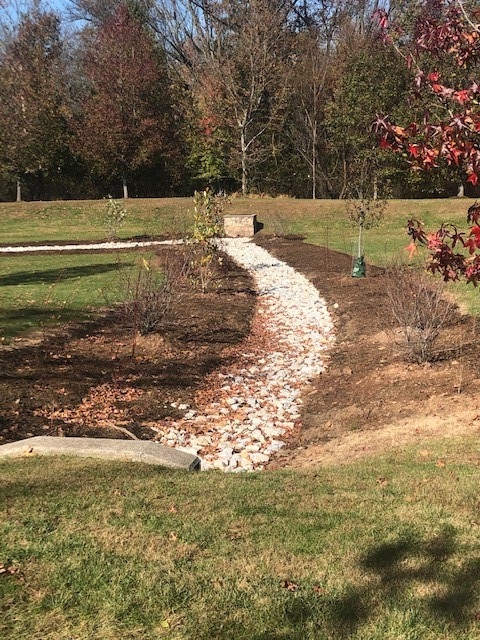Projects
Native Pollinator Demonstration Garden
Have you seen the new pollinator garden at Penllyn Woods? The EAC installed it last fall, and this spring and summer it has been growing, blooming, and teeming with pollinators. You can even check out the pollinators in action in this video.
Why are pollinators important? Without them many fruits and vegetables would not be able to grow, so our whole food chain would eventually collapse. Planting pollinator friendly plants, especially native ones, ensures that these bees, butterflies, bugs, wasps, and other insects have the nectar and pollen they eat to survive, so that we in turn will survive. Here are some tips for planting your own pollinator garden:
- Choose native plants-they share a long evolutionary history with our local pollinators.
- Select a variety of plants- different bloom times provide pollinators with food all season long.
- Avoid modern hybrids- often pollinators can’t locate nectar or pollen through the numerous and showy petals.
- Plant close together and in drifts- this helps pollinators locate the plants.
- Save garden cleanup for the spring- many pollinators overwinter in hollow stems, attached to plants or in leaf litter.
Here are two websites to help you get started:
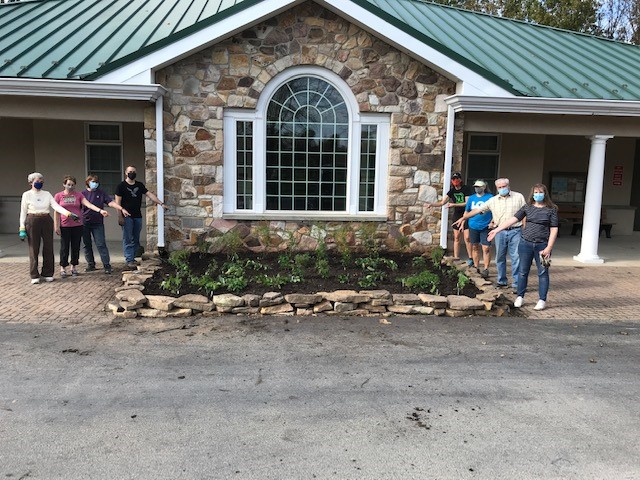
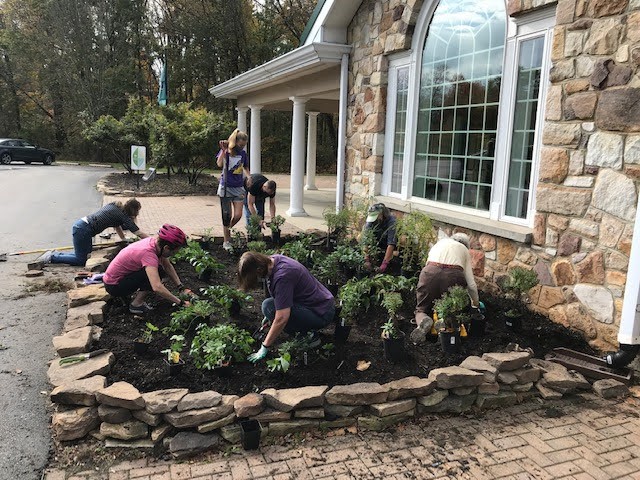
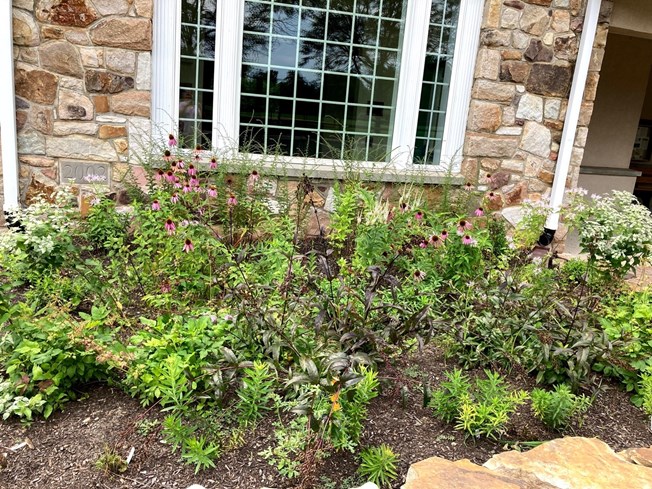
Rain Gardens
What is a Rain Garden?
- A rain garden is a garden of native flowers, shrubs and other plants used in a small depression designed to temporarily hold and then soak in rainwater.
What are the Benefits of Rain Gardens?
- Stormwater runoff carries fertilizer, pesticides, pet waste, engine oil, deicing salts and other contaminants directly into local streams. Stormwater causes flash flooding which erodes stream banks destroying habitat and altering the natural flow of the streams.
- A rain garden soaks up rainwater runoff from roofs, driveways, walkways and compacted lawn areas.
- Rain gardens remove up to 90 percent of nutrient and chemical pollutants and soak up 30 percent more water than an equivalent patch of lawn.
Where do I put my rain garden?
- Choose an area where you want to soak up rainwater, at least 10 feet from the house.
- Rain gardens can catch water from downspouts as well as water that drains off roads and walkways.
- Do not place a rain garden in areas that are consistently wet. Rain gardens should drain completely within 24 hours (Refer to Penn State Extension link listed below).
- Before you dig, call PA One Call (800-242-1776) to locate underground utility lines.
Choosing the Right Plants
- The rain garden has areas that range from very wet to dry.
- Choose plants suited for those areas and plant them close together.
- Find Penn State recommended plants at https://extension.psu.edu/rain-gardens-the-plants
What about mosquitoes?
- A rain garden is not a pond and should drain within 24 hours, which is not long enough to allow mosquitoes to breed.
For More Information
For a comprehensive guide to rain gardens, see the following:
- Lower Gwynedd Township Environmental Advisory Council
Lower Gwynedd Township EAC - Penn State Extension
https://extension.psu.edu/an-introduction-to-rain-gardens - Rutgers University Rain Garden manual at
http://water.rutgers.edu/Rain_Gardens/RGWebsite/RainGardenManualofNJ.html - University of Connecticut Rain Gardens at
https://nemo.uconn.edu/raingardens/ - Wisconsin Department of Natural Resources at
https://dnr.wi.gov/topic/shorelandzoning/documents/rgmanual.pdf
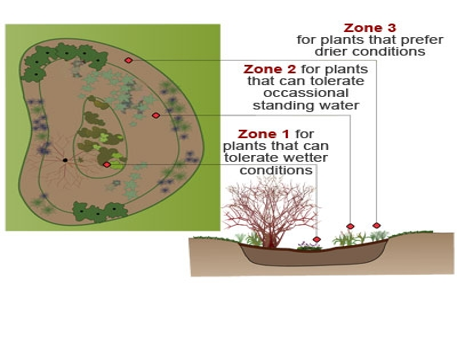
Source: https://www.thisoldhouse.com/how-to/how-to-build-rain-garden-to-filter-run
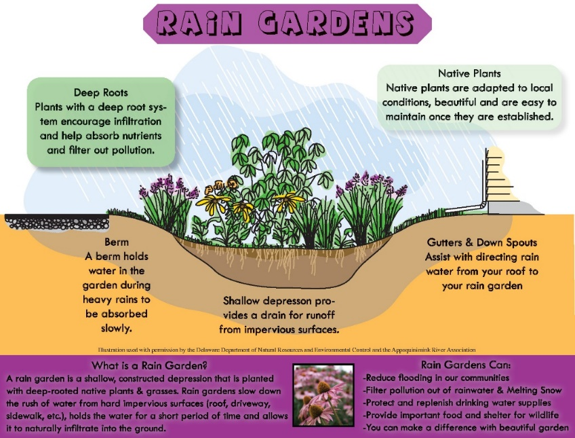
Source: Haverford Township Environmental Advisory Committee
Growing Greener Basin Naturalization Project- Phase 2
Lower Gwynedd Township began Phase 2 of the Basin Naturalization Project, which is funded through the Growing Greener Grant. The two Township-owned basins located in the open space area of the Spring House Farms Development were retrofitted as part of this project. The slideshow below was presented by the EAC to give a background and overview of the entire project.
EAC-Basin Project Slideshow
